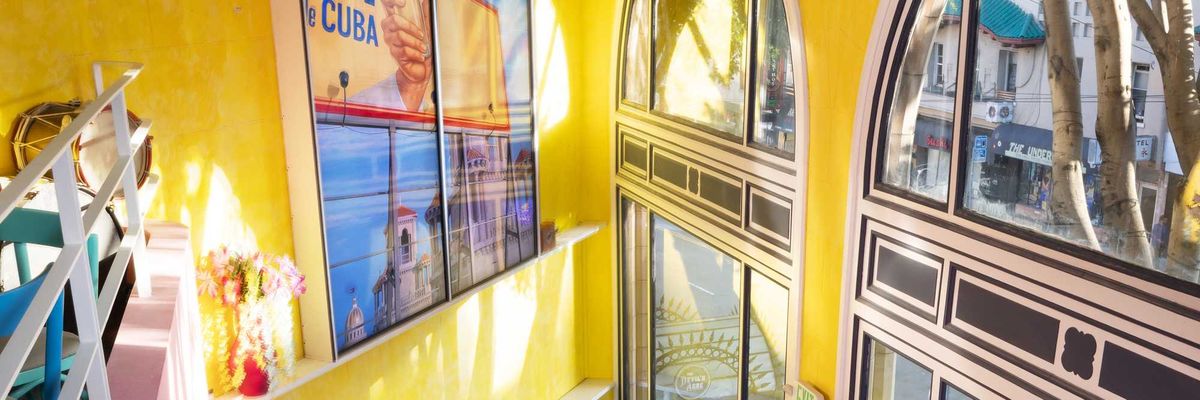California has just creaked through its driest January on record and is staring down a fourth year of crippling drought—and everyone is talking about it. A recent op-ed in the LA Times left us all quaking in our unused Hunter boots. As our reservoirs dwindle, the Department of Water Resources is pleading with residents to conserve water however we can—fix your leaky faucets; let go of your precious lawns. But for some winemakers in Napa Valley, the answer lies in more mystical methods that hail from medieval times.
Marc Mondavi, of the famed winemaking dynasty, is a witch. We’re not being impolite. No, Mondavi is one of many so-called water witches, or professional “dowsers,” who practice the craft known as divining. Divining, or dowsing, is a medieval method of detecting natural energies in the earth to discover treasures hidden underground: ores, petroleum, and ground water. While hinted at in the Bible and in ancient African cave art, divining as we know it today traces back to 15th Century Europe, where dowsers used forked twigs to find ore. Settlers brought the technique over from the other side of the Atlantic, making it popular among American farmers searching for wells. During the Vietnam War, some Marines even used dowsing to find enemy tunnels and weapon caches.
Different water witches have different methods—some search with L-shaped brass rods or Y-shaped twigs, while others use metal pendulums. Mondavi discovered his gift during high school, when his girlfriend’s father handed him a willow fork. The pair found he had talent, but he didn’t think much of it. Mondavi, after all, is no stereotypical crystal-carrying spiritualist. But as a man in wine business, Mondavi is especially concerned with the plight of California’s farmers, and not just his own winery. "I’m referred to by most of the well drillers here in the valley, when people call them to drill a well. They would rather have a spot marked by a dowser than just randomly pick a spot, because there’s not water everywhere," said Mondavi in a recent interview. "And with today’s drought here in California, I’ve been very busy."
When he began working for his family’s winery, Mondavi connected with the late Frank Wood, who developed him as a dowser. Several years ago, the pair went up against a team of professional hydrologists, and beat the scientists in finding water not once but twice. Martin Luther may have long ago declared divining “the work of the devil,” but Mondavi is such a believer that today he sells a line of wines called The Divining Rod.
Considering that California grows more than 90 percent of America’s broccoli, strawberries, and garlic—and we are the world’s fourth largest wine producer—it’s no wonder water-starved Wine Country is home to a robust coven of water witches, some of whom have been working for decades. And some farmers are investing thousands of dollars to employ them.
Rob Thompson is a third-generation Northern California dowser whose grandfather divined oil and gas deposits in the 1930s. Unike Mondavi who dowses only on the weekends, Thompson is answering the uptick in demand due to the drought by focusing on divination full-time. “I dowse all over California,” says Thompson, whose frequent work in Napa and Sonoma sometimes takes him afield to Bakersfield or Oregon. “That’s all I do right now,” he says. He will even work remotely anywhere in the world, dowsing via Google Earth.
So how does it work exactly? Armed with divining rods, the water witch begins a session by standing in the middle of a plot of land, slowly turning in a circle with his rods pointed outward, almost like radar. When he or she finds water underfoot, the two rods suddenly cross. Thompson says the sensation of discovery “feels like two magnets pulling together,” a force of energy that may call to mind the movement on a Ouija board. If Thompson feels a pull in one direction, he heads that way, adding that his rods cross with stronger pull depending on how much water is underground.
It’s easy to laugh off divining as mysticism, once fostered in the Middle Ages and now primed for modern Bay Area bohemians. That is until you think about the amount of money involved in drilling for water. To drill a hole just as a test costs a farmer around $15,000 (a diviner may only charge $500 an hour), and a finished well easily fetches six figures; that’s before any other expenses, such as the cost of constructing roads to haul in drilling equipment. While dowsing is often dismissed as pseudoscience, the truth is that even geologists are only making educated guesses, based on topography and flora, when it comes to finding wells. It’s mostly speculation until someone busts out a drill.
Doing business with witches may seem a little crazy, but working dowsers point to thousands of gallons divined and count some of Napa’s largest wineries as clients. And the wine business there is booming in spite of the drought. The California Department of Agriculture has stated that the 2014 grape crop earned $706 million, an all-time record. With one year’s crush yielding so many barrels of cash, dabbling with the occult may be a perfectly practical expense in the wine business.
Embedded image via Eric Risberg/AP.




















